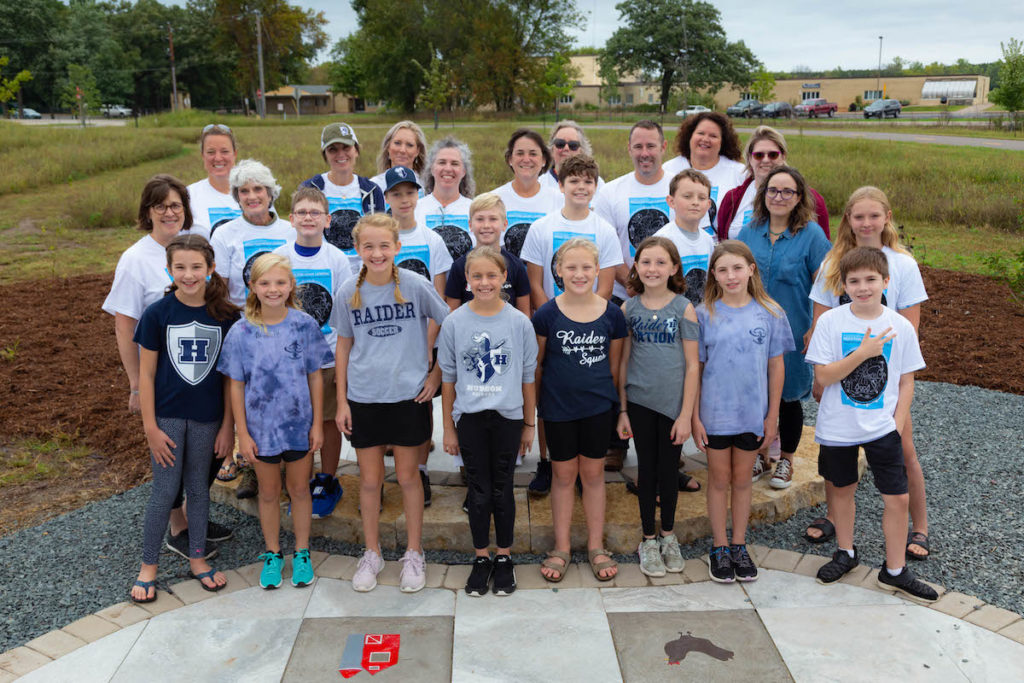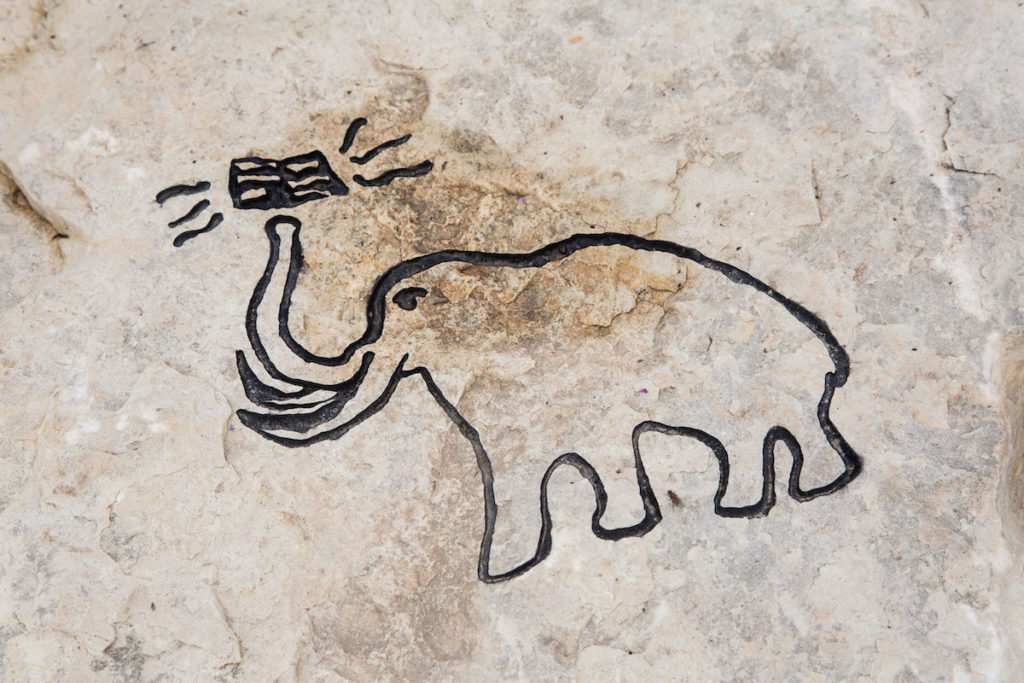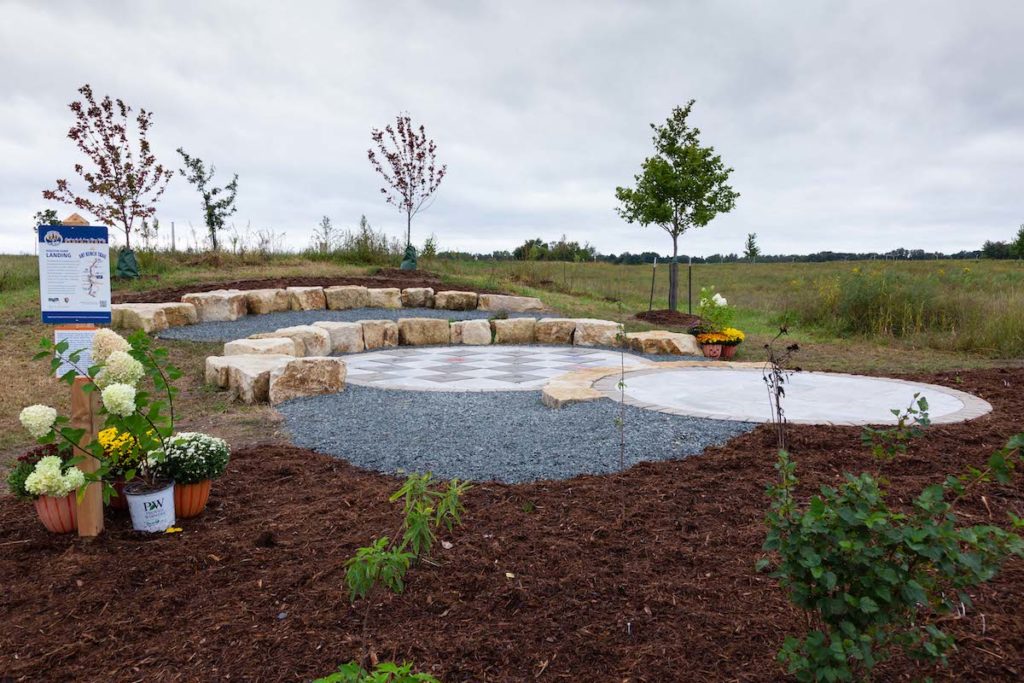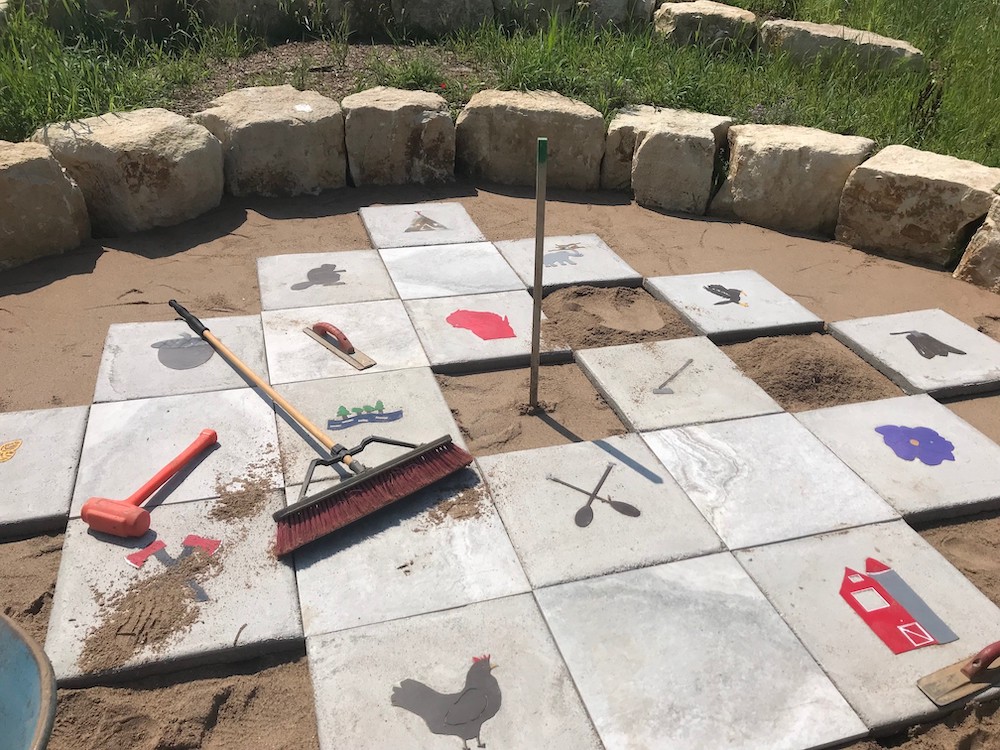Houlton Hawk Landing
Trailhead Park, Houlton, WI
This gathering place was designed by 62 fourth and fifth grade students from Houlton Elementary School with architect John Kalmon and Dan Shimon from Willow River Company.
Directions:
From Hwy 64, take exit for Hwy 35. Go west to Hawk Street. Turn right. Trailhead Park is on your right. Bench is in the northwest portion of the Park. Follow the mowed paths.
Local Attractions
Don’t Just Sit There!
Play the scavenger hunt created by this bench’s student designers (PDF) »
Partners & Participants
Designed by 4th and 5th grade students from Houlton Elementary School with John P. Kalmon, architect, and Dan Shimon, Willow River Company.
In partnership with Hudson High School, St. Croix Valley Master Gardeners, The Phipps Center for the Arts, Rivard Stone, St. Croix Bike & Pedestrian Trail Coalition and St. Croix County
With funding and additional support from Education Foundation of Hudson, Friends of Perch Lake, Hartman Homes, Houlton Parent Association, Hudson Daybreak Rotary, Hudson Home and Garden Club, St. Croix Bike & Pedestrian Trail Coalition, St. Croix County Historical Society Octagon House Museum, St. Croix National Scenic Riverway, St. Croix Valley Foundation, Thrivent, Town of St. Joseph, William H. Phipps Foundation and a grant from the Wisconsin Arts Board with funds from the state of Wisconsin and the National Endowment for the Arts.
Dedicated
September 21, 2019
More Information
Houlton celebrates Art Bench project – Hudson School District

It was the first day of June at Houlton Elementary School, but gray skies and blowing wind said spring wasn’t done quite yet. A group of students, teachers, and parents were hard at work in the school parking lot, mixing concrete and forming molds.
The beach could wait until a sunnier day, because today, the ideas of dozens of young people were going to be cast into concrete. A long and thoughtful design process was finally coming to its conclusion.
After stirring the concrete and water in wheelbarrows, the kids and adults poured it into square molds, then pressed colorful metal shapes into the wet concrete. Across the road, other students crawled over sandstone blocks, finding places to plant flowers among what would be amphitheatre seating in a future gathering place.
The workday was the outcome of the 10th Art Bench in the St. Croix Valley, a series of community art projects that promote human connections and a sense of place. Houlton’s project is located across from the school at a trailhead for the St. Croix Crossing Loop Trail for bicyclists and pedestrians, where it will serve countless visitors over the years ahead.
“The kids honestly have had a complete and total voice in what it looks like,” said Houlton principal Sue Hellmers. “I think they felt very empowered and they have been able to see that their ideas have been very valuable.”
During the previous several months, third- and fourth-grade students at Houlton Elementary had participated in a series of workshops which guided them through many questions they had to answer.
They learned about principles of landscape architecture and design, working with first John Kalmon, a Hudson architect, and then Dan Shimon of Willow River Company, a local landscaping and nursery business.
In November 2018, seated around tables covered in clay and pipe-cleaners, scissors and glue, the students created models of their ideas, learning how to bring a concept into three-dimensional artwork. With many hands and minds often seeming to work as one, each student adding pieces and parts, the creations grew into complicated and unique forms.
After Kalmon moved to Montana, the group worked with Dan Shimon and his colleagues. Shimon helped them understand the available materials, construction methods, and possibilities. Then he helped them mix the concrete.
The group put their minds and muscles to work on bringing the project from mental to physical form. The fourth grade students studied Native American and Wisconsin history, and third graders looked at the history of Houlton and the surrounding area.
From their research, they devised symbols and designs that represented how they see themselves in their community and their country. These images would ultimately be imprinted on the patio and etched on the sandstone seating. It makes for a scavenger hunt for bench visitors, asking them to engage with what makes the area special.
Images include a mammoth that represents the Ice Ages and glaciers that shaped the region’s geology, teepee representing Native American homes, canoe paddles for how people have long used the local rivers for transportation, a hoe and a barn for the history of farming, a beaver to represent the fur trade, and the wood violet, Wisconsin’s state flower, which was chosen by the state’s school children in 1908.
“I believe that our students feel a profound sense of pride that their collaborative learning and creativity provides such a lovely space for the community to enjoy,” said teacher JoAnn Augustin. “This project met our school’s mission statement of thinking deeply, working together, and caring about our community.”
After coming up with the design, it was up to older students to create the metal shapes. Hudson high school shop teacher Tom Klatt and his metalshop students took the designs and fabricated the pieces.
At school on that Saturday with summer around the corner, students and adults formed pairs and small groups, mixing, pouring, tying rebar, planting, laughing and talking. With almost everyone an amateur, they once again had to learn from each other. Lifting an 80-pound bag of dry concrete, carrying it to a wheelbarrow, dumping it in, and then mixing it with water took teamwork at every step.
What had started with the students doing research, sharing ideas, seeking compromises, and putting together final designs, ended with students getting their hands dirty bringing it all to life.






